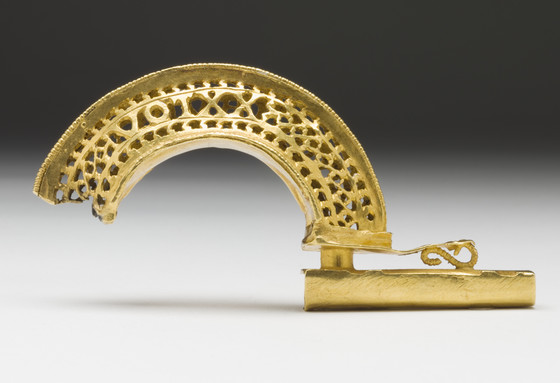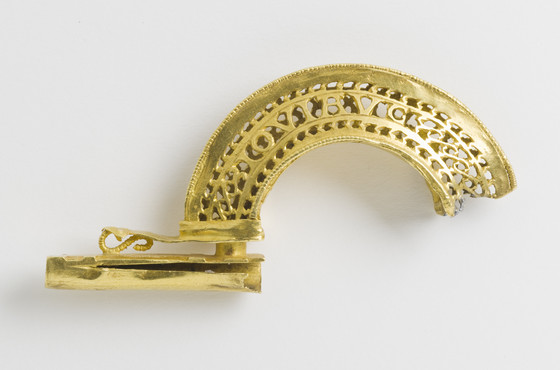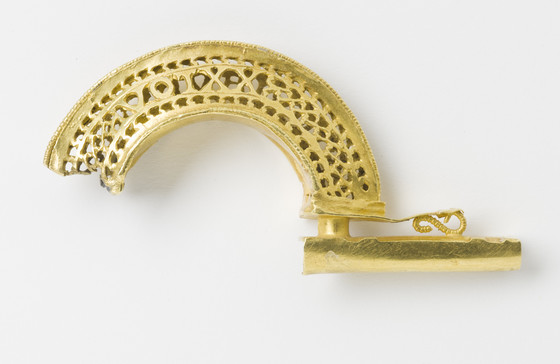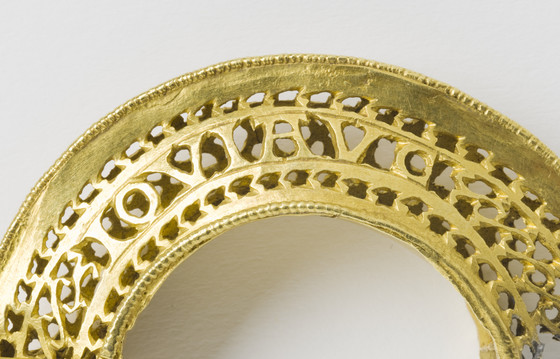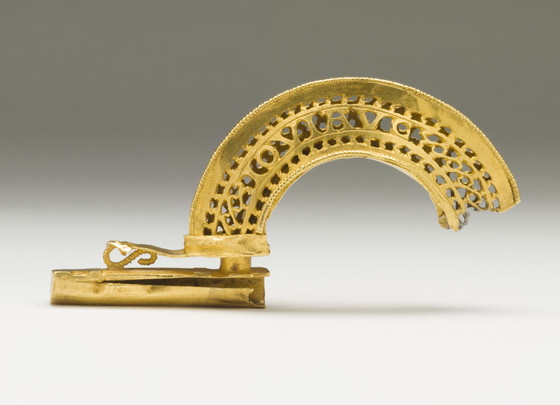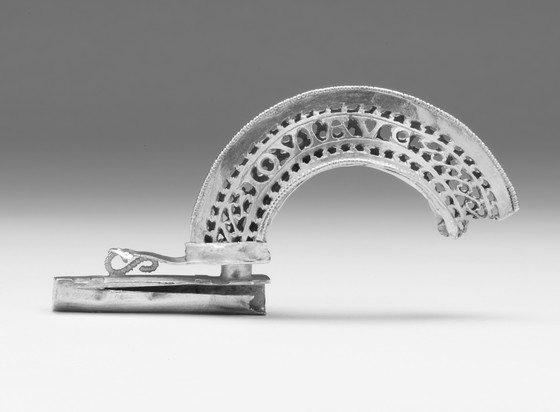Alongside sculpture and vases, Hearst's gift of Greek, Roman and Etruscan artifacts also included ancient jewelery....
Alongside sculpture and vases, Hearst's gift of Greek, Roman and Etruscan artifacts also included ancient jewelery. The most remarkable piece is this gold fibula, found in 1787 at Erickstanebrae, near Moffat, in Dumfriesshire, Scotland. Fibulae were used like clothes-pins, as fasteners for the heavy cloaks worn by Roman soldiers. This precious and artfully worked example would no doubt have been worn proudly and prominently; from written and archaeological evidence, it appears that gold and silver fibulae were worn by military or civil officers. The damage to the hinge suggests that it may have been torn off violently.
The fibula is decorated with three tiers of openwork, and is one of a number of gold fibulae to carry imperial inscriptions. In the middle of one side is written IOVI AUG, probably a reference to Diocletian, who placed his dynasty under the protection of Jove. He had been made Emperor in 284 A.D., following a successful career in the Roman army. Two years later, he established the 'dyarchy', dividing the empire and ruling the east himself, and appointing Maximian in charge of the west. This arrangement was later developed into the 'tetrachy', whereby each Emperor shared power with his future successor. Diocletian retired in 305 A.D, and died in 316 A.D. The inscription on the other side, VOTXX ('votis xx'), supports the association with Diocletian, since it most likely refers to the vicennalia, the twentieth anniversary of his reign. There is also an inscription, 'Porto' or 'Forto', scratched on the inner surface of the bow, probably by the fibula's owner.
It is fascinating to speculate how the fibula would have reached Scotland. Constantius Chlorus led an expedition into Caledonia (modern-day Scotland) in 306 A.D., and it has been suggested that the fibula was sent to him or an important companion, and subsequently lost.
More...
